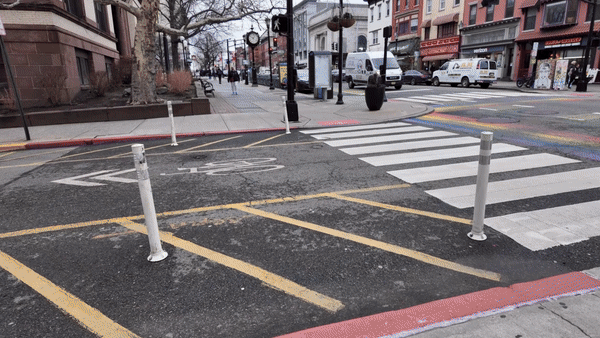On this episode of the Strong Towns Podcast, Chuck discusses safe streets advocacy with Amy Cohen, the co-founder and president of Families for Safe Streets.
Read MoreAmericans are suckers for the idea of a moonshot, of taking a big, challenging risk and earning a huge payoff. The problem is, these moonshots usually fail, especially when they're trying to fix complex, chronic problems like traffic safety. There's a better way.
Read MoreChildren need the option to participate in the outside world, not just to fear it. Here's how Tiffany Owens Reed is carving out space for her son.
Read MoreDesigning streets to encourage safe behavior is a powerful tool for creating lasting prosperity. But when cars are designed to encourage unsafe behavior, it threatens to undo that progress.
Read MoreSafety practices and education are vital for children, but when that education is focused solely on personal responsibility and is enforced through shame, it can do more harm than good. Personal responsibility can only go so far: For streets to truly be safe, changes to the transportation system itself are needed.
Read MoreLocal government is supposed to be the highest form of collaboration, but it doesn’t always feel that way. Too often, city rules favor opponents of change, meaning one dissenting voice can doom a project. However, Jersey City demonstrates how cities can increase collaboration by adopting an iterative approach to city planning.
Read MoreThe driver was operating their vehicle entirely lawfully at this intersection in Grand Junction, CO—yet a person was nearly killed and the driver’s car was totaled. Who do we blame? (And what’s the point of assigning blame?)
Read MoreFor the first time, the Insurance Institute for Highway Safety conducted tests on 14 widely available versions of self-driving technology. Here’s what they found.
Read MoreHoboken, NJ, has gained fame online for its safe streets. But does this urbanist’s paradise live up to the hype, in person? We sent Strong Towns Staff Writer Asia Mieleszko to do some on-the-ground investigating to find out.
Read MoreWe talk with Dr. Shima Hamidi of the Johns Hopkins Bloomberg School of Public Health, whose research cuts into the core assumptions of the civil engineering profession in regard to traffic design.
Read MoreWe need to rethink how we talk about car accidents involving pedestrians. Pedestrians are seen as obstacles for drivers who are often driving too fast and are too distracted along roads that are all too wide.
Read MoreOne reason communities hesitate to acknowledge their dangerous stroads is because the problem is so big, addressing it would paralyze our existing planning bureaucracies. But there is still a way forward.
Read MoreHow do we explain a situation where people are routinely killed—in the same location—and nothing is done?
Read MoreCities in Massachusetts are among the most walkable in the U.S., so why is progress for safer streets there so maddeningly slow?
Read MoreThe rise of trunk-or-treat is just another outcome of our streets becoming more dangerous, but it’s important we come together and save the tradition of trick-or-treating.
Read MoreWhen residents of Medicine Hat, AB, flagged a school crosswalk as dangerous, the city responded quickly with bollards and paint—showing that cities can (and should) implement street design changes before tragedy occurs.
Read MoreResidents of the Farmers Market District in Dallas, TX, thought they were buying into a “walkable” neighborhood…except its 9-lane road is too dangerous to walk by. And the city’s attempts at making it safer aren’t helping.
Read MoreCGI rendering shows what the future of a street could look like if we put people first.
Read MoreOttawa’s “jaywalking” campaign is putting pedestrians in an impossible catch-22.
Read MoreSpeed cameras are not even part of a solution to street safety. They are a dead end.
Read More



















